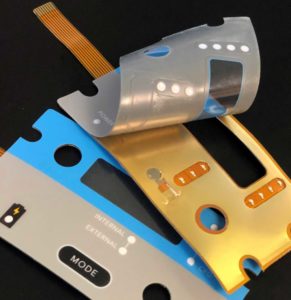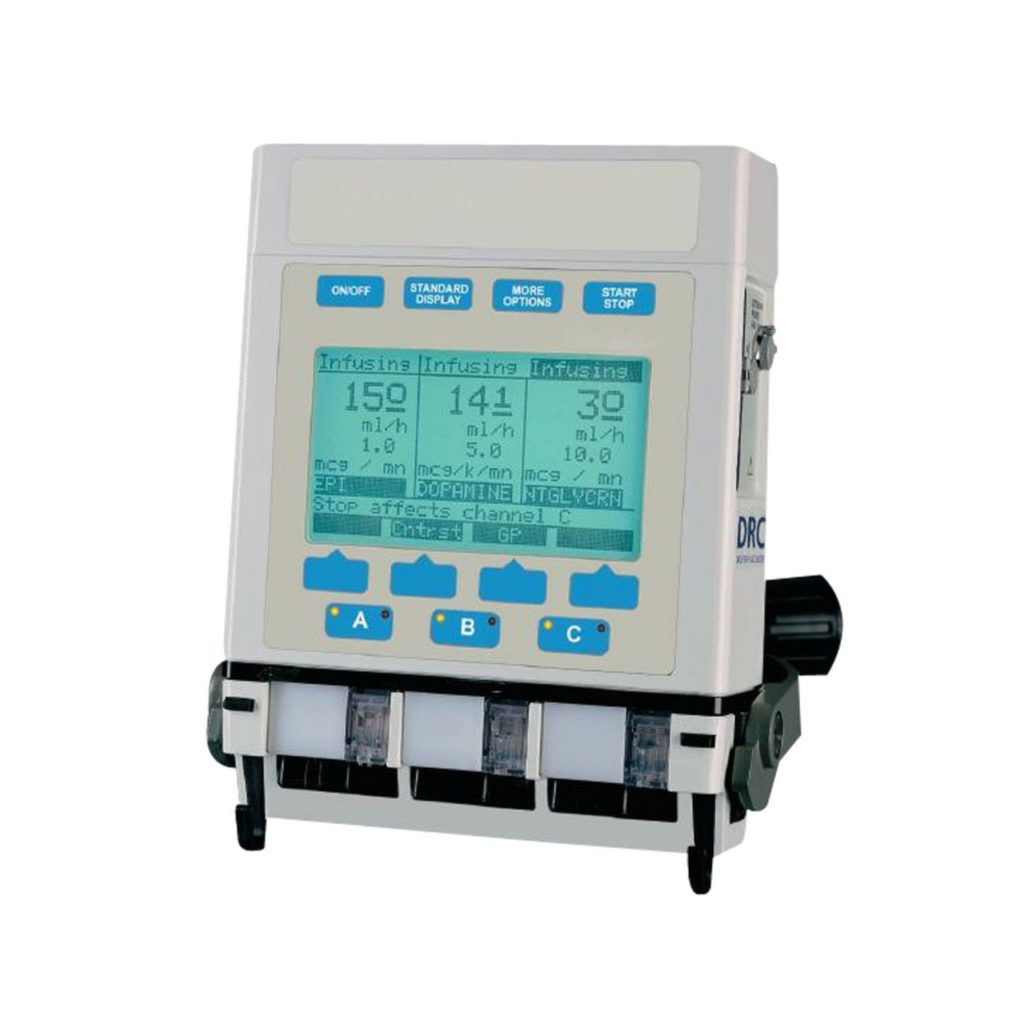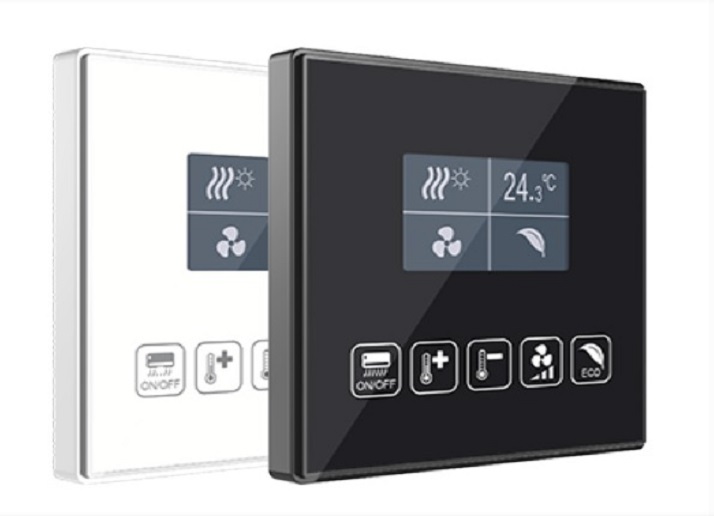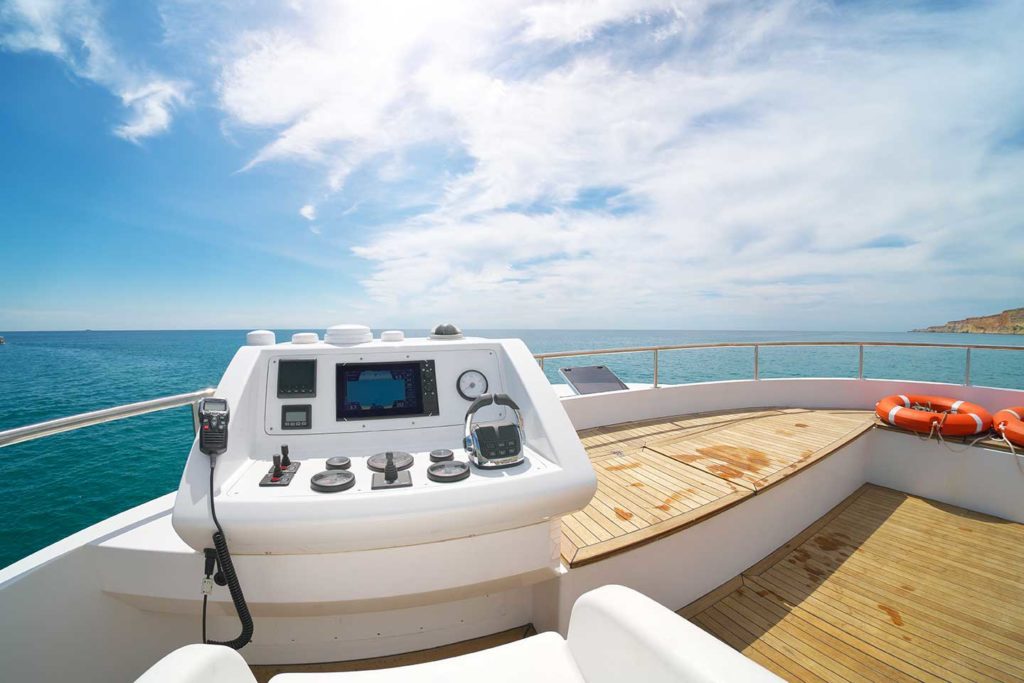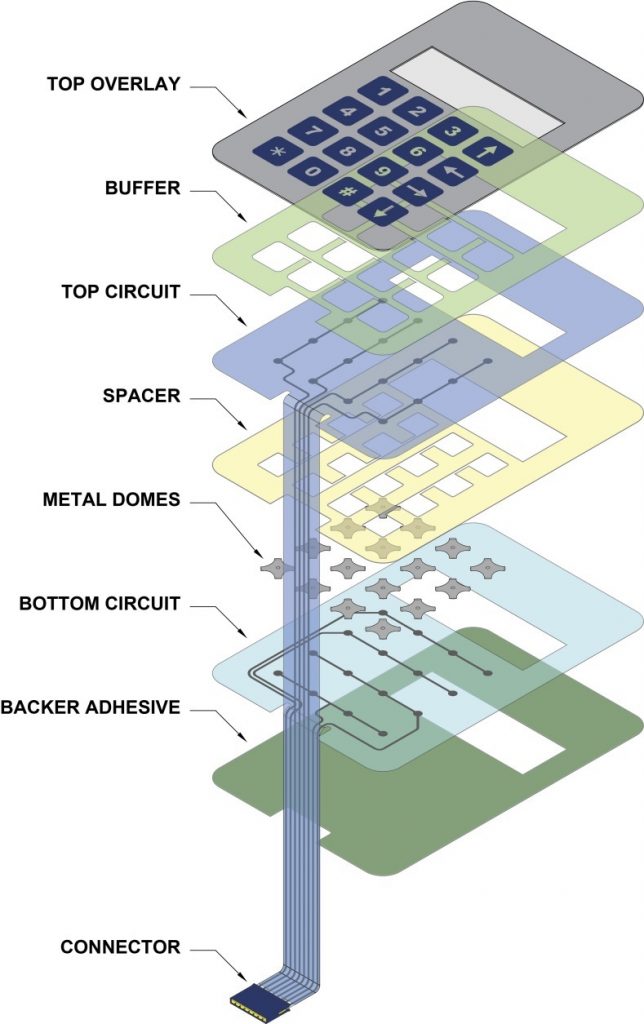Preventing Membrane Switch Failures
A lot of time and effort go into designing and manufacturing membrane switches, so it can be such a shame if the final product is not properly handled or assembled upon completion. Typically, the number one cause of keypad failures is in fact improper handling or assembly.
Here are a few quick prevention tips to help you avoid damaging your membrane switches:
1. Key Pressing: Do not press the domes or keys in the air or unsupported as this will result in dome damage (such as bent domes). If a key feels “dead” or “flat”, it’s usually due to a bent and damaged dome. Ensure the membrane switch is on a flat and rigid surface when pressing any of the keys.
2. Bending or Flexing: Never bend or overly flex a membrane switch. Bending the switch can damage critical components on the circuit such as domes, LEDs, etc.
3. Creasing Circuit Tails: Avoid creasing a printed silver circuit tail. The creasing of a silver flexible circuit will most assuredly cause the silver ink to crack. Copper flex circuity is more forgiving and allows for creasing, more on that here.
4. Keypad Surface: Ensure that the surface (the keypad is being applied to) is clean and debris-free prior to membrane switch application. It’s always great assembly practice to clean the surface with isopopyl alcohol prior to adhering the membrane switch to your assembly.
